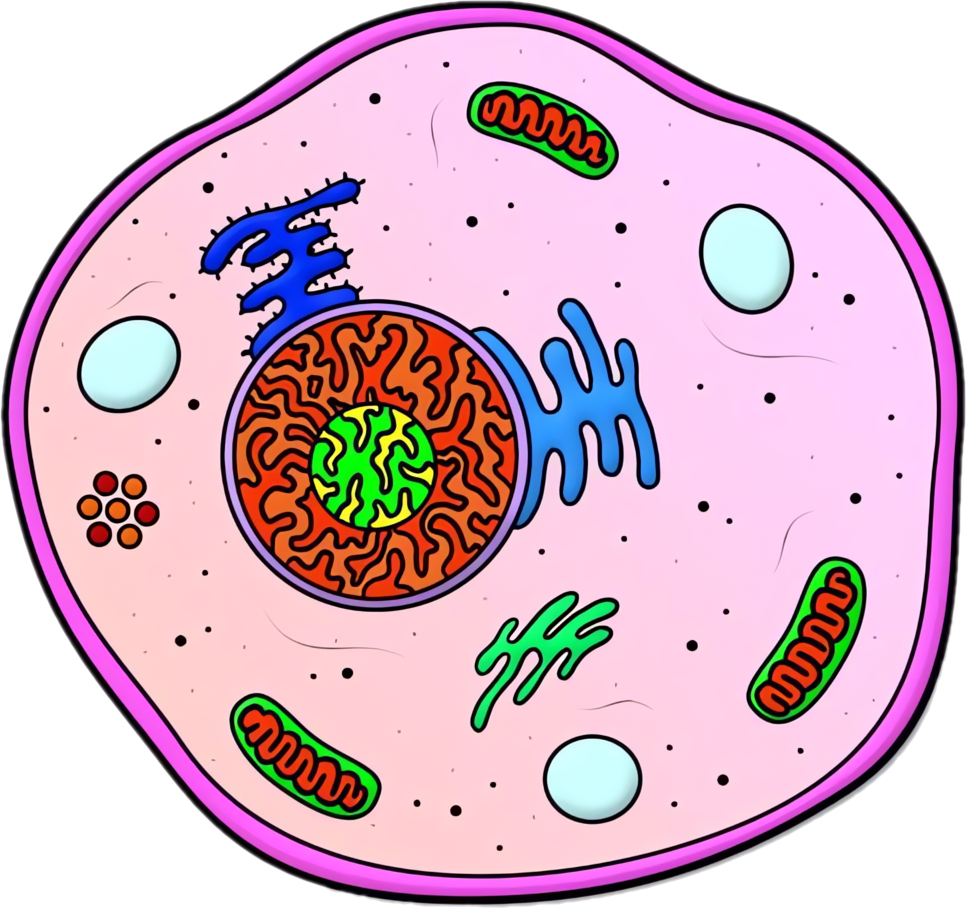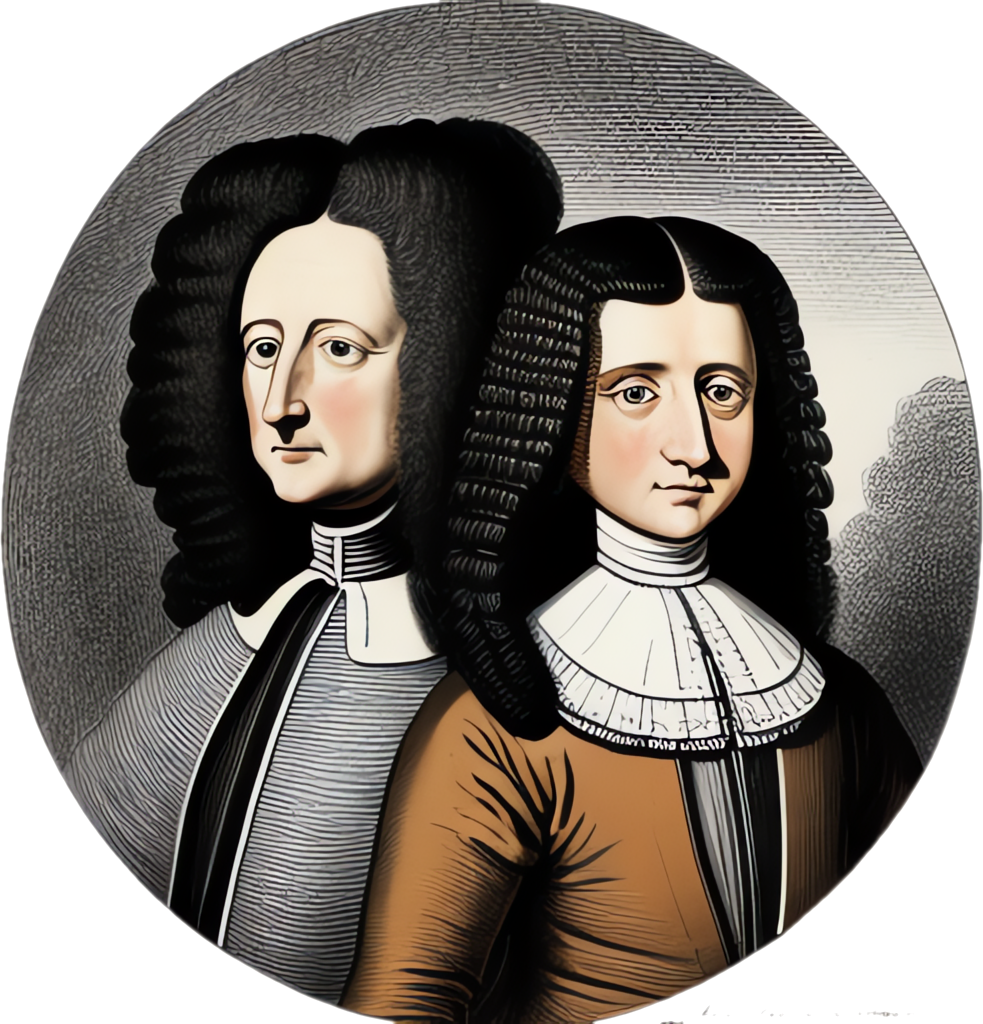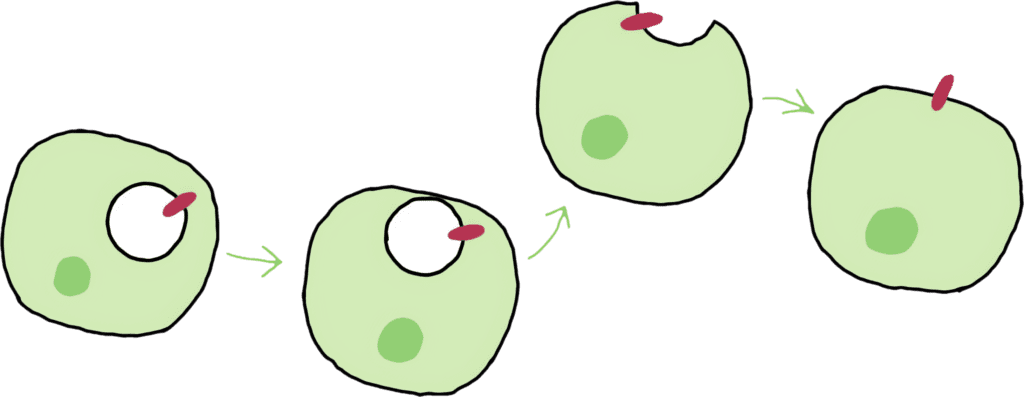The cell, we all know that it is the main building block of life, but what does it really mean and what is it really? Just imagine a complex city that has highways connecting everything, a hall that is at the centre and regulates everything, power plants providing energy, factories producing goods and tons of other things. Just like this imaginary city, all of the cells in our body and in every living thing contain the exact same dynamic system, but for sure with different names. Just like a city’s aim is to maintain stability and improve its infrastructure, cells work to keep their internal systems stable, grow and reproduce. In the world of cells, that means constantly working tirelessly for balance and adaptation to ensure survival efficiency.
From the tiniest bacteria to the largest animal on the planet, every living organism is composed of these cells, from only one to billions of them, which makes them fundamental to understanding life itself. But how the existence of them was discovered and understood and what do they really do so as to keep life. Let’s dive into the fascinating world of cells and uncover their secrets.
What is a cell, really?
Basically, a cell is the smallest unit of life that can properly work and make life possible. We can’t see them with the naked-eye, they are all microscopic and really really tiny. Remember the city example, just like cities, they also have a border separating the cell from the outer world which is called as a membrane and various kinds of essential machinery molecules. Despite their minuscule size, cells are incredibly sophisticated, capable of performing complex tasks such as energy production, waste elimination, and reproduction.
Throughout this article, you will see that cells are just like cities
Why are cells so important though?
But why are cells so important? It is simply because without cells, the life we know would not exist. To make it simpler, think about ourselves, the human species, every function our bodies perform -be it breathing, thinking, seeing, growing, moving, or even healing- is all a result of the cell activities. Cells are the fundamental units of structure and function in living organisms. They either live by themselves, think about a country which has only 1 city; or they can come together in order to create even bigger countries, I mean even bigger living creatures. When they work together to do so, they build tissues, organs and ultimately, the entire organisms.
Moreover, studying cells is crucial for medical science. By learning how cells operate, scientists and doctors can better understand the mechanisms behind diseases, develop treatments, and even explore the potential for regenerative medicine. Cells hold the key to unlocking the mysteries of life, health, and disease, making them the most significant point of biology research and innovation.
Throughout the journey of this article, we will be exploring the discovery of cells, their types and structure and the vital roles they play in life. Let’s delve into the fascinating world of the cell, the fundamental building block of life.

History of cells, How were they discovered?
Imagine the first explorers of a new island by using ships, or imagine peering through primitive telescopes to uncover the secrets of the universe. Similarly, the journey to understanding cells began with the invention of the microscope in the 17th century, a tool which opened the door to an unseen world of things, especially in biology, in microorganisms.
During the mid 17th century (1665), a British scientist, and the father of the cell, Robert Hooke became one of the first pioneers to explore the hidden microscopic world. Using a rudimentary microscope, Hooke examined a thin slice of cork and he saw tiny, box-like structures. He likened these little things to cells of a monastery and thus coined the term ‘’cells’’. Little did he know that these things were the building blocks of all life on the entire planet.
While Hooke was the first one to found cells, it was Anton van Leeuwenhoek, a Dutch entrepreneur who has a big curiosity on science, revolutionized our understanding of the microscopic world. Leeuwenhoek crafted lenses so densely that he was able to see what no one else could back then; a bustling, vibrant world teeming with ‘’animalcules’’ which we now know as microorganisms, displaying astonishing movement and intricate structures. He had discovered the bustling marketplace in the hearth of a previously uncharted city.

For sure, the journey did not stop there. In the 19th century, the cell theory began to take shape. Imagine the cell theory as urban planners laying out the blueprint of a modern metropolis. Two German scientists Matthias Schleiden and Theodor Schwann proposed that all plants and animals are composed of cells. This groundbreaking idea is similar to that every structure in a city, from the smallest shop to the biggest palace, is built from the same basic material; bricks. In the language of biology, it is cells!
Rudolf Virchow, a German medical expert, added the final cornerstone to this theory. He proposed that all cells come from pre-existing cells. Much like new buildings spring up from the foundation of old ones, ensuring the ongoing growth and renewal of the city.
Those pioneering scientists and many others are like visionary architects and engineers, laid the groundwork for modern cell biology. The work of these scientists revolutionized how we understand life, revealing that every organism is a city unto itself with cells as its working, bustling and busy citizens.
Every types of cells, I mean there are only 2
In the grand metropolis of life, not all buildings are the same; some are small and simple, while others are huge and complex. Similarly, the city of life, the cells, are also composed of two main types: prokaryotic cells & eukaryotic cells, each with its unique architecture and functions.
Prokaryotic Cells: The Simple Homes
Picture a small, traditional village situated on the edge of a vibrant metropolis. Houses in this village are small and simple, yet they contain everything needed for daily life. Prokaryotic cells are just like these village houses, they are absolutely village homes of the biological world. These cells have a simple structure but are remarkably effective.
Prokaryotic cells lack a true nucleus, so their genetic material floats freely within the cell which is similar to a village without a central administrative building. Despite their simplicity, these cells are the vital heroes of life’s cityscape, performing essential tasks such as recycling nutrients, breaking down waste, and even performing the foundation of entire ecosystems.
Eukaryotic Cells: The Skyscrapers
Now, picture a modern city that has tons of skyscrapers in the centre. These buildings are complex with designated areas for different functions, just like eukaryotic cells. Found in plants, animals, fungi and protists; they are the sophisticated high-rises of the cellular world.
Eukaryotic cells are characterized by their true nucleus, a grand office where the cell’s genetic blueprints are securely stored and managed. This centralized nucleus is like the city hall, overseeing all the activities and ensuring everything is fine and in order.
This intricate cellular metropolis is enclosed by a protective membrane, just like the city’s outer walls, regulating the flow of goods and products. Within this bustling environment, countless tiny structures called ribosomes work tirelessly to build proteins, the city’s essential workforce. The cytoskeleton, a complex network of fibers, provides structural support and acts as the city’s transportation system, moving materials and organelles around.
Plant cells, in addition to these structures, boast a rigid cell wall, similar to a fortified city wall, providing extra protection and support. They also possess a vast network of interconnected membranes called the endoplasmic reticulum, which can be compared to a sprawling highway system, facilitating efficient transport within the cell. Moreover, plant cells, chloroplasts serve as solar power plants capturing sunlight and converting it into energy.
In essence, eukaryotic cells are marvels of complexity and efficiency, showcasing the incredible diversity and ingenuity of life at the microscopic level.
Comparision of Prokaryotic & Eukaryotic Cells: The Harmony of Diversity
While prokaryotic and eukaryotic cells differ significantly in their structure and complexity, both play essential parts in the grand city of life. Prokaryotic cells, with their straightforward design, are incredibly resilient and adaptable, thriving in environments as diverse as arctic ice and volcanic springs. Eukaryotic cells, with their intricate organization, support the higher functions of multicellular organisms, enabling the diversity of life forms we see today.
Despite their differences, these two types of cells together form a harmonious ecosystem, much like a city blending rustic villages with towering skyscrapers. Each type of cell, with its unique strengths and capabilities, contributes to the vibrant tapestry of life that covers our planet.

Structure of Cells: A Microscopic Metropolis
Just as a city is composed of various buildings, streets and infrastructure all working together to sustain its inhabitants, the structure of a cell also contains kinds of small building blocks that are biologically engineered together, each part playing a crucial role in maintaining life. Let’s take a stroll through this microscopic metropolis and explore its key components.
The Cell Membrane: The City Walls
Imagine the cell membrane as the city’s protective walls and gates. This semi-permeable barrier controls what enters and exits and thus ensures the safety and integrity of the cell’s internal environment. It it just like the borders of a country; they protect against invaders while allowing trade and resources to flow through well-guarded gates. The cell membrane selectively controls what can enter inside and what can not.
The Cytoplasm: The Bustling Streets
Inside the cell’s protective walls lies the cytoplasm, the bustling streets and public spaces of our cellular city. All cells are filled with this gel-like substance that provides space so that materials and organelles can move. Just as people, vehicles, and goods navigate the streets of a city, various molecules and organelles traverse the cytoplasm, ensuring the smooth operation of cellular activities.
The Nucleus: The City Hall, The Control Centre
At the heart of the cell stands the nucleus, the huge city centre where all critical decisions are made and where the cell is governed. The nucleus houses the cell’s genetic material, DNA, which is the whole cell’s master blueprint. Here, the instructions for building and maintaining the cell are stored and managed. The nucleus coordinates growth, development and all of the daily operations and ensures that the cell lives in order, and harmoniously.
The Mitochondria: The Power Plants
No city can function without a reliable energy source and within the cell, this duty is accomplished by the mitochondria. These bean-shaped organelles generate ATP (adenosine triphosphate) which can be thought of as the energy currency of cells, of life. All of the other energy-requiring functions are made thanks to the ATP produced by mitochondria. Just like how power plants convert raw materials like petroleum, sunlight and wind into electricity to power homes and businesses; mitochondria also convert nutrients like glucose, fatty acids and amino acids into usable energy ATP, fueling the cell’s myriad activities.
The Endoplasmic Reticulum: The Factories
In our cellular city, the endoplasmic reticulum (ER) is the network of factories. There are two types of them producing different goods; rough ER & smooth ER. The rough ER which is studded with ribosomes functions as a factory producing goods, where proteins are synthesized and folded. The smooth ER which is devoid of ribosomes functions like a chemical plant, synthesizing lipids and detoxifying harmful substances. Together, they ensure the production and processing of vital materials.
The Golgi apparatus: The Postal Service
Once the goods are produced, they need to be sorted, packaged and delivered, and this is the role of the Golgi Apparatus which is the postal service of the distribution centre of a city. This organelle makes cellular products ready for delivery to their final destinations within or outside the cell. Like a well-organized distribution centre, Golgi apparatus ensures efficient and timely delivery of cellular cargo.
The Lysosomes: The Recycling Centres
Every city needs an efficiently working waste management system to maintain cleanliness and order. In cells, this duty is made by the lysosomes which contain necessary enzymes that break down and recycle cellular waste products, worn-out organelles and ingested materials, providing raw materials for the production of new cellular components. In this way, lysosomes contribute to the cell’s overall efficiency and renewal.
The Chloroplasts: The Solar Power Plants
Plant cells possess additional structures that distinguish them from animal cells. Chloroplasts, filled with chlorophyll, capture sunlight and convert it into chemical energy; just like solar panels generating electricity for a city. This process not only sustains the plant cell but also produces oxygen, a vital resource for many living organisms.
Each component of the cell, from its protective membrane to its power-generating mitochondria, works in concert to create a thriving, self-sustaining community. Together, these parts form a living city, bustling with activity, innovation, and resilience, demonstrating the intricate beauty of life at its most fundamental level.
Rest of this publishment will be posted, our story has not finished here.Keep waiting on!


My name is Ali Emre Cabadak, a dedicated biology enthusiast currently pursuing my studies at Marmara University, where I am majoring in Bioengineering. As a passionate advocate for scientific discovery and innovation, I am the founder of Biologyto. My goal is to bring the wonders of biology closer to everyone and inspire a new generation of thinkers and innovators. Through Biologyto, I aim to write scientific articles that delve into the fascinating world of biology, sharing insights and discoveries that inspire curiosity and innovation.






I am extremely impressed with your writing talents and also with the structure to your weblog.
Is this a paid subject or did you customize it yourself? Either way stay up the nice quality writing, it is rare to peer a great blog like this one today.
Instagram Auto follow!
Thank you so much for your kind words✨! I have customized all by myself, totally free.